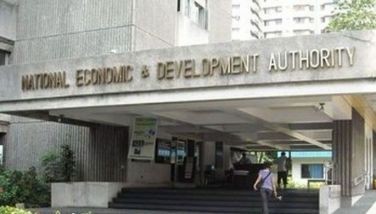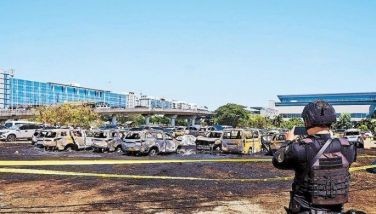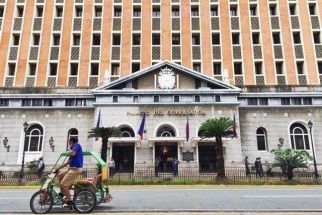More damaging 'excess nutrients' seen in occupied Spratly reefs than unoccupied reefs — report
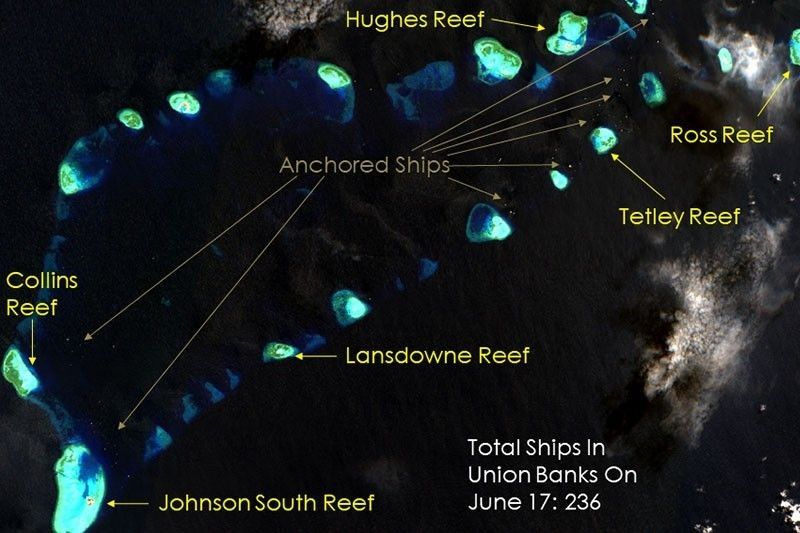
MANILA, Philippines — Occupied reefs in the Spratly Islands in the West Philippine Sea have more damaging "excess nutrients" compared to similar reefs without human activity, according to a report from a US-based geospatial imagery and data analysis company.
In a 29-page report released by Simularity on Thursday (Manila time), the think tank concluded that there is significant evidence that the Union Banks reefs "have more reef degrading macroalgae than similar reefs which are not occupied."
The latest report is a followup to its July 19 report, which showed that raw sewage from hundreds of anchored ships in the Spratly Islands have damaged coral reefs in the area.
"We show that the Chlorophyll-a concentrations, over the same 5 year period, for three reefs in the Spratly Islands that have significantly less human activity than the reefs in the Union Banks," the report read.
Simularity earlier explained that Chlorophyll-a concentration is a measure of excess nutrients that sink to the sea floor, where it is consumed by bacteria that would later on create a "dead zone."
"These reefs have shown a significant reduction in Chlorophyll-a concentrations, in contrast to the majority of Union Banks Reefs," Simularity reported, referring to unoccupied reefs in the area.
Simularity provided images showing Chlorophyll-a concentration value through grayscale or false color visualizations.
Based on the illustrations, the think tank concluded that there is significantly less Chlorophyll-a in Bombay, Northeast Investigator and Royal Captain Shoals from 2016 to 2021. These shoals are unoccupied.
"Chlorophyll-a values decreased in the last 5 years for each of these reefs. The lowed Chlorophyll-a levels indicate the coral is less likely to be damaged by macroalgae overgrowth," the report said.
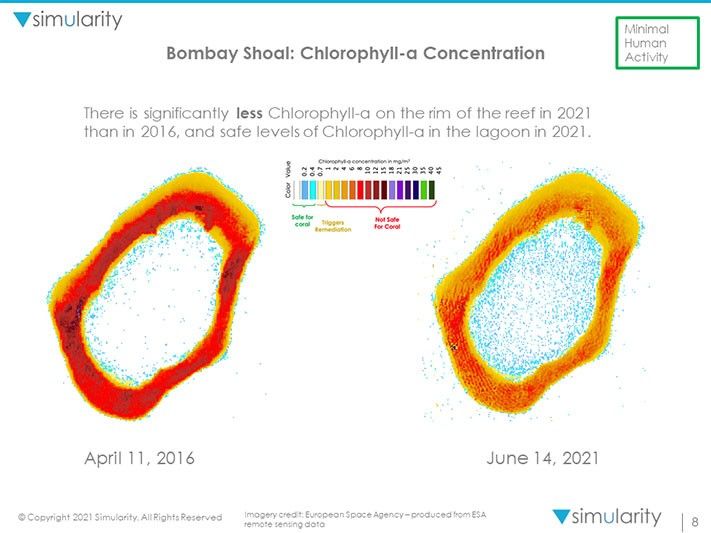
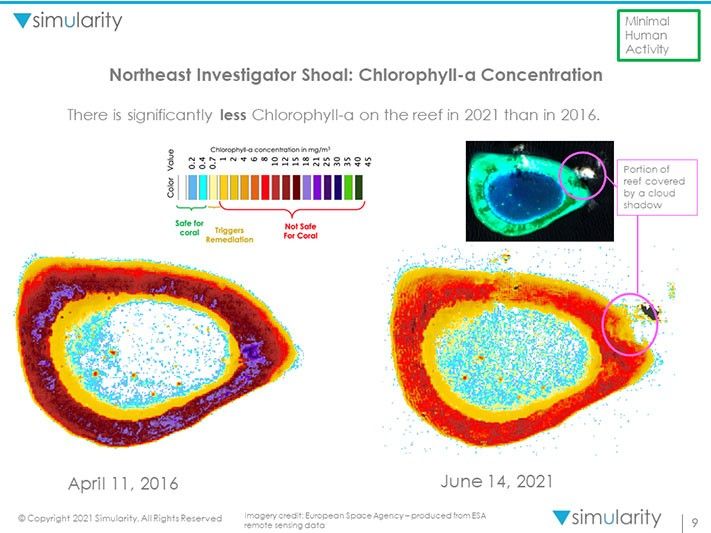
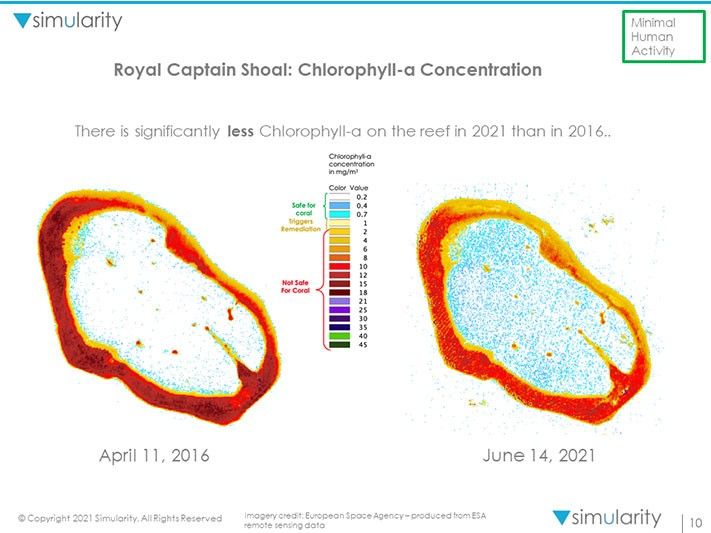
Meanwhile, higher concentrations of Chlorophyll-a were observed in Mabini (Johnson South), McKennan (Hughes), Pagkakaisa (Lansdowne) and Ross Reefs.
Mabini and McKennan Reefs are occupied by China while Pagkakaisa Reef is occupied by Vietnam. Ross Reef is not occupied but it is located near significant human activity.
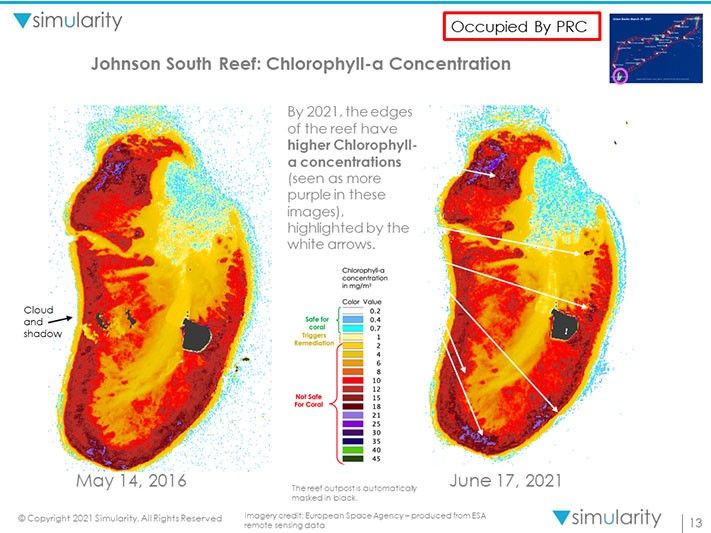

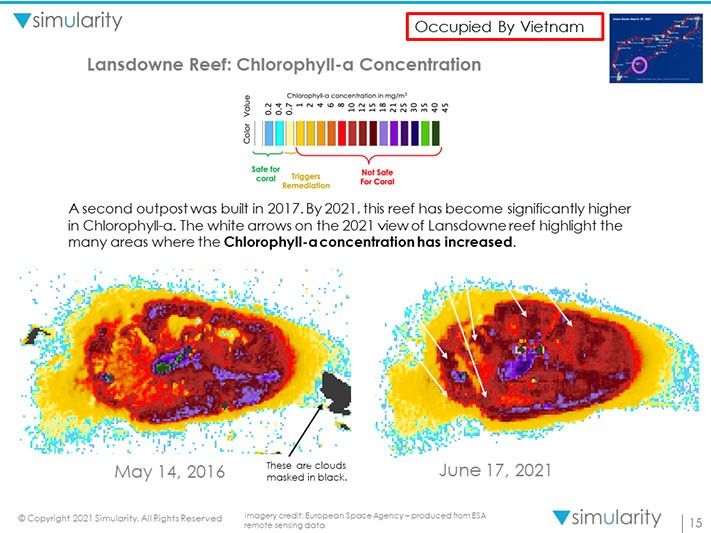
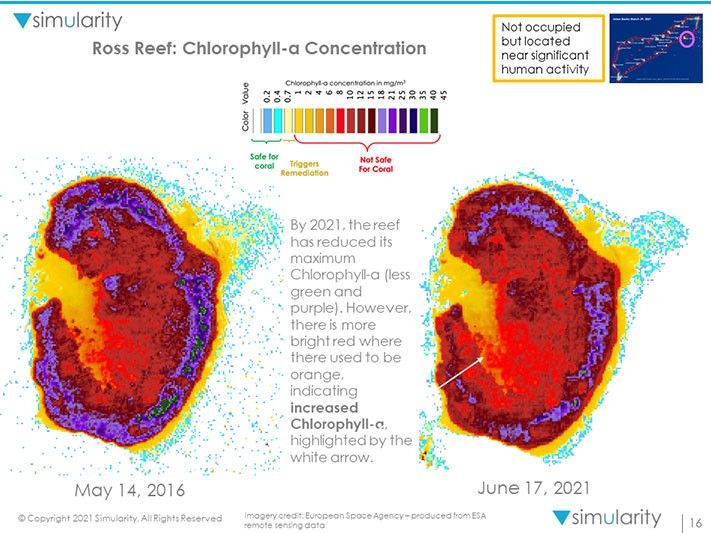
Citing the water quality in the Great Barrier Reef, Simularity noted that coral cover on the reef has reduced by over 70% over the past century.
This is due to eutrophication, which Oxford defines as "excessive richness of nutrients in a lake or body of water... which causes a dense growth of plant life and death of animal life from lack of oxygen."
Quoting a report titled "Evidence of Large-Scale Chronic Eutrophication in the Great Barrier Reef," Simularity pointed out that the reduction of coral cover in the area is "largely attributable to the chonic state of eutrophication" that exists in the reef.
- Latest
- Trending

















